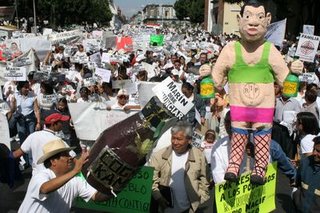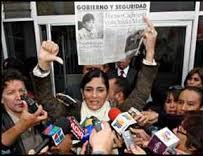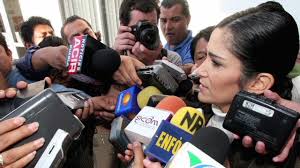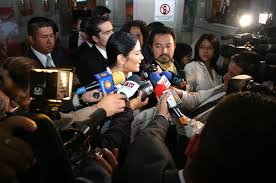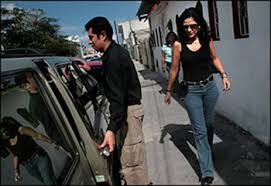Preface & Chapter 1 here. Chapter 2 here. Chapter 3 here.
Trial 3: Succar Kuri’s trial for child pornography, in which Lydia Cacho is to appear as a witness.
‘Lydia Cacho never realized just how far-reaching (Succar Kuri’s) network was…’ a Special Prosecutor working under federal authority told reporters in March 2006. This acknowledgment by certain Mexican feds – that they knew more than Lydia Cacho, that they knew how far-reaching Succar Kuri’s Pedo Elite network was, – was made while Succar Kuri sat in a US prison awaiting extradition to Mexico. When asked if all the child rape and child porn networks worked together, the Special Prosecutor answered: ‘Very probably. And not only at the national level, but on an international scale as well.’ The Special Prosecutor went on to say Succar Kuri’s detention does not necessarily mean his networks have been dismantled: ‘In the Succar Kuri case specifically,…it is a large-scale network… (M)ultiple international connections have been shown to exist. More than were previously thought.’ Who these ‘multiple international connections’ were was not revealed. – But for the first time, certain Mexican authorities had now acknowledged that Lydia Cacho’s book was factual: Succar Kuri was kingpin of an international child rape and child porn network, running “sex tourism” operations in Mexico for men to rape children. His extensive money-laundering likely linked him to organized crime.
Succar Kuri had been held in a US prison for over two years because the US Magistrate tasked with extraditing him didn’t trust Mexican authorities would charge Succar Kuri, and feared he would be freed. On April 4, 2006, a few weeks after the Special Prosecutor made these remarks to the press, US Magistrate David K. Duncan finally authorized Succar Kuri’s extradition to Mexico. Succar Kuri was returned to Mexico on July 5, 2006, in the darkness of night, and escorted by federal agents to Cancun’s low-security prison. Succar Kuri shook the federal agents’ hands before they left, and waved them a friendly farewell.
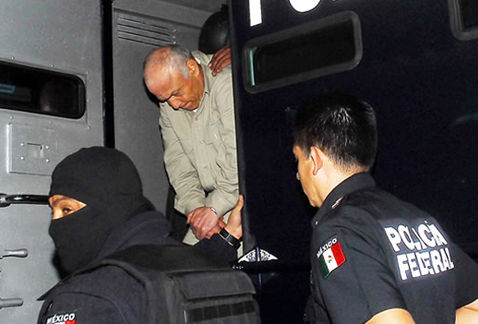
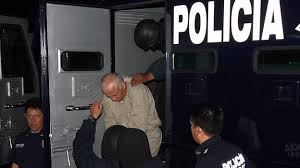

*
In Cancun’s low-security prison, Succar Kuri rented a luxury suite. Family members, – sons and grandsons seen visiting him here, for example, – weren’t searched, and came 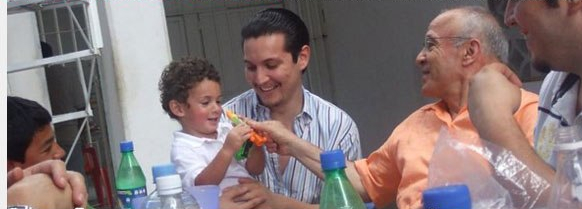 and went as they pleased. Emma also visited Succar Kuri in his luxury suite several times, each time accompanied by Succar Kuri’s lawyers. Due to rumors Succar Kuri was planning a large-scale jail break, Succar Kuri was moved from Cancun’s low-security prison to Chetumal, a medium-security prison. He was then moved to Altiplano, a maximum-security prison. A few days after this final transfer, nearly 100 inmates broke out of the Cancun Prison as planned, – but without Succar Kuri.
and went as they pleased. Emma also visited Succar Kuri in his luxury suite several times, each time accompanied by Succar Kuri’s lawyers. Due to rumors Succar Kuri was planning a large-scale jail break, Succar Kuri was moved from Cancun’s low-security prison to Chetumal, a medium-security prison. He was then moved to Altiplano, a maximum-security prison. A few days after this final transfer, nearly 100 inmates broke out of the Cancun Prison as planned, – but without Succar Kuri.
Lydia Cacho: “I had been receiving calls on my cell phone from an unknown number; the person (sic) on the other end would breathe heavily for a few moments and then hang up. Then the calls began coming in on my apartment landline, until I had to eventually unplug the phone every evening when I arrived home. In the final days of October 2006, I got a phone call from Chetumal – a special agent at the prison there asked for my fax number. He said he was an admirer of mine and read my book; he respected my bravery and needed to warn me that my life was in danger… He faxed over a document (showing Succar Kuri had hired two inmates) at the Chetumal Prison to assassinate several witnesses, myself among them. Succar Kuri had given (the men) a drawing of my home in Cancun, sketched in blue ink on the back of a napkin. That same morning, when I went out to buy the day’s paper, (this story) was on the front page.”
*
A year after Succar Kuri had been extradited back to Mexico, the day had finally come: Lydia Cacho would face Succar Kuri. She had been summoned as a witness at his trial, a trial in which he was charged by eight of his victims with producing child pornography. Videos found of Succar Kuri raping these girls would substantiate their statements in Court. But because Mexican law on child rape was weak, Succar Kuri was not additionally charged with raping these girls, but instead with “corruption of minors.” Lydia Cacho anticipated she would be asked to testify that she had sheltered these girls, asked to detail the crimes against them disclosed under trauma-care, asked to explain the psychological damage to a 5-year-old girl raped by a 200-pound man on film, that film then sold, anticipated she would testify that she and shelter staff had now spent years trying to return these girls to some semblance of normalcy. Lydia Cacho would now look into Succar Kuri’s eyes, – after she was abducted, tortured and raped for exposing the exclusive brotherhood of rapists he headed, after Succar Kuri had called her to tell her he would kill her, after knowing Succar Kuri had hired hitmen, – at least twice, – to have her killed. – On May 3, 2007, – finally, – the day had come.
Lydia Cacho: “I had only seen (Succar Kuri) in photographs and video footage. Like millions of others, I had watched the video in which Succar Kuri, with a sadist’s cruelty, describes how much he enjoys seeing five-year-old girls bleed when he penetrates them.”
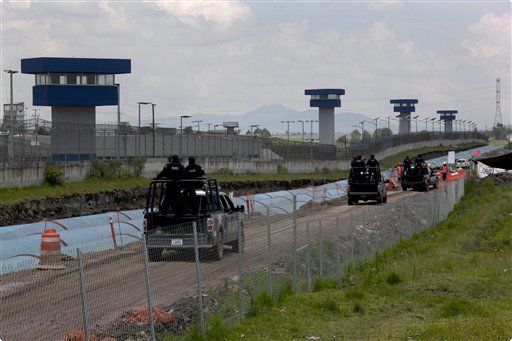
“I arrived at the Altiplano Maximum-Security Prison…There is no cell-phone coverage for a two-kilometer radius surrounding the prison and the initial sensation upon entering the isolated area is strange. The most dangerous prisoners in the country are held there.”
Lydia Cacho was brought into a small hearing room where Succar Kuri 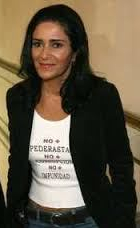 sat behind bars. Lydia Cacho: “Through (the bars), I glimpsed a gaunt, pallid face… I was wearing my shirt that read, ‘No More Pedophiles. No More Corruption. No More Impunity.’ I stepped forward and stood in front of Succar Kuri where he sat, and the expression on his face became distorted; he eyed my shirt carefully, then immediately gestured for his attorneys.” Lydia Cacho’s shirt was deemed ‘offensive to the prisoner;’ the Judge ordered her to cover it.
sat behind bars. Lydia Cacho: “Through (the bars), I glimpsed a gaunt, pallid face… I was wearing my shirt that read, ‘No More Pedophiles. No More Corruption. No More Impunity.’ I stepped forward and stood in front of Succar Kuri where he sat, and the expression on his face became distorted; he eyed my shirt carefully, then immediately gestured for his attorneys.” Lydia Cacho’s shirt was deemed ‘offensive to the prisoner;’ the Judge ordered her to cover it.
Lydia Cacho: “Succar Kuri spent his time during the session glaring at me with intense rancor. From time to time, he would screw up his face so tightly that his pale lips all but disappeared from sight. We were seated a mere six feet from one another, face-to-face.” Lydia Cacho was kept in this claustrophobic room with Succar Kuri, six feet in front of her, face-to-face, with no food or drink, for over twelve hours.
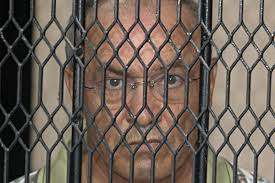
Lydia Cacho: “It was clear to me that his lawyers lacked a coordinated strategy. In reality, Succar Kuri is indefensible… The pedophile and his lawyers were doing their utmost to skirt the main issue under consideration at the trial: namely, the children who had been raped and used by this man to produce child pornography… (Succar Kuri) had my book brought out again and again for all to see; since he was not able to touch it through the bars, his lawyers would hold it up for him and he would point at something written on the pages and pose questions to me about whatever it happened to be… From one moment to the next, my appearance, which I was ostensibly making in the capacity of a witness, had morphed completely – now it was almost as if I was the one on trial… There was one particularly critical moment when I even found myself asking the Judge if I was making this appearance as a witness who knew the raped girls or, rather, if this was a trial being held against me for having published The Demons of Eden… At other times, as when his lawyer insisted that I am not a journalist because I don’t hold any sort of professional credential, Succar Kuri would raise up his arms and pound them against the (bars) before bringing them down to beat his own chest, like a gorilla marking its territory…”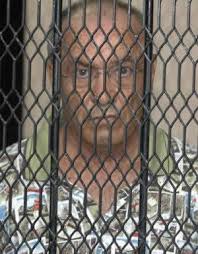
“I did manage, despite all this, to tell the (girls’) stories… (And also testify) that the pedophile’s lawyers had offered some of the victim’s mothers (money) in exchange for their silence – offers which were accompanied by threats…”
Lydia Cacho: “Finally, after more than 11½ hours, his face contorted and his eyes wild with rage in an expression reminiscent of Hannibal Lecter, Succar Kuri let it be known he was going to end me.” Unfortunately, the Judge had momentarily stepped out of the room and did not witness Succar Kuri openly making death threats. With blood-red rage, Succar Kuri told Lydia Cacho he would kill her. With blood-red with rage, Succar Kuri told Lydia Cacho he would kill her whether he was sentenced or not. With blood-red rage, Succar Kuri told Lydia Cacho he would kill her if it was the last thing he did.
The session was finally adjourned. Lydia Cacho walked over to Succar Kuri as he stood behind bars in the country’s highest-security prison. “I stood directly in front of him,” Lydia Cacho said. “He is a small man – at full height he comes up to my chin, just like Kamel Nacif.” [For the record, Governor Marin is also small].
*
As Lydia Cacho started the long walk back to the prison parking lot, a security van pulled up alongside her. ‘Are you the reporter?’ the prison guard asked. Lydia Cacho: “With a greater sense of pride in my heart than I had felt at any previous moment, I replied that I was indeed. Behind me, several feet under the ground, sat the man who had possessed, like some amoral demon, the souls and bodies of who knows how many girls… Ahead of me was the fresh, free air…” The guard offered to give Lydia Cacho a lift to the parking lot. As she got in, he remarked, ‘Those guys over there are the devil’s lawyers. They can walk.’
*
The girl victims had already testified face-to-face against Succar Kuri, – a terrifying tribunal. Lydia Cacho: “Back in the SUV, for the almost two hours it took to drive back to the Mexico City [Airport], I sat next to my bodyguard with my face turned towards the window and cried inconsolably. Nobody but those young souls who had lived under this cruel man’s yoke could know what it was like to submit to his psychological tortures. I was acutely moved by these young girls and their bravery… Even in their darkest hours, after the nightmares and the mood swings, the girls insisted they would tell me the entire story on one condition: that I would try my best to make sure Succar Kuri and his accomplices would not rape or sell another girl as long as they were alive… And I promised… If they’re not giving up, I thought, nobody else has the right to give up either.”
*
Five days after Lydia Cacho faced Succar Kuri, she was at the Mexico City Airport with three fellow journalists, having just returned from a reporting trip to Juarez, covering the atrocities there against women and girls. Before heading to her Mexico City destination, Lydia Cacho offered to drop her colleagues off. Her bodyguards loaded everyone into the armored SUV. Lydia Cacho: “Just as we were picking up speed and preparing to pull onto the freeway, the SUV began to fishtail, and the driver, who was one of the agents assigned to protect me, instantly slammed on the breaks, swerving to the curb in order to bring the vehicle to a stop.” One of the agents got out; shocked, she held the wheel’s lug nuts in her hands. They seemed to have been sawed with a hacksaw.
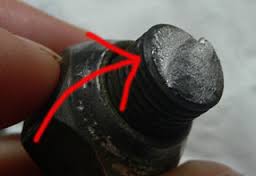
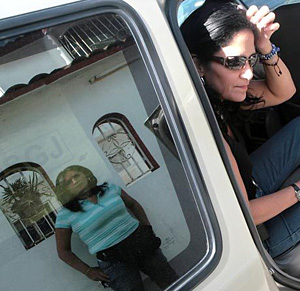
Lydia Cacho filed attempted murder charges with the Office of the Special Prosecutor for Crimes Against Journalists. “(Three months later), as I arrived home, my bodyguards spotted a car parked outside my building with someone sitting at the wheel,” Lydia Cacho recounted. “My bodyguards approached the individual, who said he’d been sent to deliver a summons for me. Ten o’clock on a Friday night and (the Prosecutor’s Office is) delivering a summons? we marveled. I took receipt of the document and to my amazement that pursuant to my having filed charges of attempted murder, (the Special Prosecutor for Crimes Against Journalists was) convening me for the very next day – a Saturday, and without the presence of my lawyers – to undergo a psychological evaluation in order to provide further explanations of the attack against me. They did not request to see the vehicle’s lug nuts, nor did they ask to interrogate my security team or the other material witnesses, (or request that we) immediately hand over the SUV for analysis in order to verify whether or not it had been tampered with. (They) only wanted to determine whether I was in my right mind and telling the truth.” By 2016, Lydia Cacho said, nine years later, “the Prosecutor’s Office has still not analyzed the vehicle we were traveling in, which remains to this date parked (outside their office building).” No one was interested in hearing that five days earlier, Succar Kuri stood in a maximum-security prison promising to kill Lydia Cacho.
Puebla Attorney General Blanca Laura Villeda Martinez, who had arranged for Lydia Cacho to be tortured and raped in jail, told reporters that she sawed off the lug nuts. Whether this was caustic sarcasm or a confession was unclear. In any case, it wasn’t investigated.
After Lydia Cacho’s vehicle was sabotaged, many of her friends distanced themselves: “I lost a lot of friends and I respected that – they said they didn’t want to be seen with me in public. My social life changed dramatically.”
Lydia Cacho, no longer sure who she could trust, fired her bodyguards.
*
In August 2007, a Cancun Judge sentenced Succar Kuri to a mere 13 years in prison for child pornography and corruption of minors, and fined the multi-millionaire the ridiculous sum of 85,837 pesos. Emboldened, Succar Kuri appealed the case, – demanding he be set free. At the same time, the pro-bono lawyers representing the abused girls also appealed the case, – demanding Succar Kuri receive a harsher sentence. But all parties would now have to wait: An Appeals Judge would decide.
*
In late 2008/early 2009, Lydia Cacho was diagnosed with cancer. Her uterus and ovaries were removed.
Lydia Cacho’s doctors warned her that the stress she was under was killing her. Her liver and one remaining kidney were severely damaged. Her organs in general weren’t functioning properly, none of her blood values were normal, and her cortisol level was off the charts. If her cortisol level didn’t come down, her doctors told her that she could die. Lydia Cacho: “I underwent the requisite medical treatments and followed all my doctor’s recommendations, save one. – I was not willing to give up the case. Not until Succar Kuri was convicted for child pornography. Otherwise, his vengeance against the girls who had spoken out against him would be brutal, merciless.”
While in bed recuperating from cancer and the hysterectomy, Lydia Cacho, by late 2009, wrote and published Not With My Child: A Manual to Prevent, Detect, and Heal Child Sexual Abuse. The book was a best seller. And despite Lydia Cacho’s money problems, she asked her publisher to put out a cheap edition at almost no cost, “so teachers throughout Latin America could have easy access to it…”
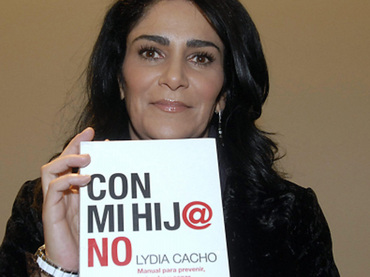
*
In May, 2010, a group of military men carrying exclusive military assault rifles attacked the shelter. Leading the attack was a Cancun cop – whose wife and son were at the shelter. Lydia Cacho: “He claimed that we had kidnapped the two of them and were holding them against their will… His wife was indeed at the shelter – he had tried to shoot her… He had made use of police equipment to track the woman, with the help of the (Quintana Roo) Attorney General’s Office. As always, (the shelter) was up to the challenge. We made video recordings of everything: the unit member’s badge numbers, the attack on the gate, and the arrival of additional armed hooded officers to assist in the task of trying to kick down the doors. Eventually, the abusive husband yelled at the guard on the other side of the door. ‘Tell Lydia Cacho that I’m going to report her for kidnapping and that her days are numbered.’ We were able to get the federal police to come to our aid. But to our surprise, the commander merely showed up, took a look around and left, explaining to his superiors that the men had hoods and assault weapons and that although some of them were wearing police uniforms, he thought they might be members of the Zetas or some drug cartel.” The shelter was under siege for several hours, before the Quintana Roo Attorney General ordered them to fall back. The cop who led the attack got a one-week suspension.
The Quintana Roo State Attorney General later admitted that 70 percent of Cancun’s police force had now been infiltrated by the drug cartels. Blood-soaked cartel wars were spreading across Mexico. The cartels had become too powerful to have to pay off the politicians anymore, and vied for power themselves. In these killing times, thousands and thousands of women and girls disappeared across Mexico. The women’s shelters of Mexico were needed now more than ever, but under these conditions, many found it impossible to continue to operate. Lydia Cacho: “Victims of domestic abuse in a majority of areas in the country were no longer able to find help… So it was that our shelter, almost overnight, became one of the few safe places left in the country… Like the rest of the country we found ourselves besieged, surrounded by unprecedented levels of violence…”
*
Several months later, Lydia Cacho collapsed on an airplane as it was landing. Emergency room doctors diagnosed her with an autoimmune disease, – the same autoimmune disease which had killed her mother. “(A)ll the tests indicated that my body wasn’t going to hold out much longer,” Lydia Cacho said. “Ghostly visions of the suffering my mother had endured for the three agonizing years before her passing away haunted my dreams and my waking thoughts. For whole wretched weeks at a time, I lay in bed unable to move as the days went by and the doctors went after my disease with experimental treatments that left me completely spent. I felt a fear that was unfamiliar to me. Fear of waking up one day to find my body paralyzed, unresponsive to my strength of will. Fear at the weakness of cloudy eyes no longer able to read. Fear at discovering my memory reduced… I cried myself to sleep on many of those nights, curled up with a pain that was tearing at my veins…”
Yet somehow, – curled up with pain on her sickbed, – Lydia Cacho wrote anti-trafficking material for schools, developing an educational program on how traffickers can be identified, how traffickers ensnare victims, and how to escape traffickers. Young women and girls would initially be taught this material, then teach it to other females, and so on. Lydia Cacho pulled herself out of her sickbed for the initial workshop, teaching 500 young women and girls this material. A year later, 10,000 young women and girls had learned how to identify and avoid traffickers, and were teaching it on.
*
Also in 2010, this same year, Lydia Cacho published Slavery, Inc.: The Untold Story of Human Trafficking (in Spanish, Esclavas del Poder). In the previous five years of court battles, every time Lydia Cacho had to leave Mexico because of a death threat, she used the days or weeks away from home to investigate female-trafficking around the world. She carried a GPS locator on her person so in case she was killed the people who love her could find her remains. Lydia Cacho: “If you follow the stories of the victims, you can draw the trafficking routes… Alone with my camera, my tape recorder, a notebook, and my NGO contacts as my only provisions, I traveled to London, Turkey, Kyrgyzstan, Uzbekistan, Tajikistan, Afghanistan, and the Afghan border with China. From there, I flew to Thailand, where I traced the routes along which young girls are traded, venturing through the interior of the country to Burma (Myanmar). I then traveled through the villages of Vietnam… I headed to Japan to investigate the Yakuza [Japanese Mafia] in Tokyo and Osaka. And from there I flew to Los Angeles in order to document the Tokyo-Hawai’i-California route for the transportation of drugs and Asian women to the United States. I had investigated human trafficking in India, Nepal, and Sri Lanka, as well as Latin America, on earlier trips…”
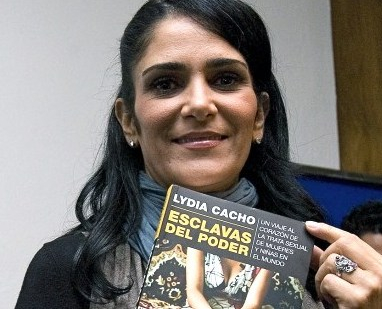
While enduring 3+ stress-killing trials for which she had to gather evidence, secure witnesses, and persevere through government-ordered gas-lighting, while standing alone against the unified Pedo Elites and their pedo-bros and handmaidens embedded in the government and justice system who consistently worked to derail her, while preparing to come face-to-face with the multi-millionaire Pedo Elites who had plotted and continued to plot her death, while recovering from several feminist-punishing rape attacks which had impacted her musculoskeletal system, while trying to heal from being abducted and tortured and almost cast into the ocean, while providing emotionally-exhausting trauma-care to the girl victims to return them to some semblance of normalcy, while operating a high-security battered women’s shelter which regularly came under siege from groups of armed men and was taking in more and more women as men turned Mexico into a blood bath, and while working to pay her bills, mostly her lawyer’s bills – Lydia Cacho “used the time between different trials” – her fleeing men’s death threats time – to travel to 141 countries around the world to chase down the Uber-Patriarchy and map their female-trafficking operations world-wide.
Lydia Cacho wrote Slavery, Inc.: The Untold Story of Human Trafficking, – an 800-page book, – while enduring this and more over the preceding five years. However, because the publishers who had financed her worried the book was depressing, they severely cut the book. The English edition of Slavery Inc., for example, was cut from 800-pages to 256-pages, with more than two-thirds of the book slashed. Still, Lydia Cacho’s book was translated into Turkish, Portuguese, Italian, French, German, Dutch, Swedish and English. Slavery, Inc. was published while Lydia Cacho was still recovering from cancer and the hysterectomy, and still fighting her autoimmune disease with experimental treatments. Too sick to go on the global book tour, Lydia Cacho had to bow out of scheduled appearances in Italy, France, Germany, Sweden and the US. She did make it to a few countries, – Australia, for example – though that was physically difficult.
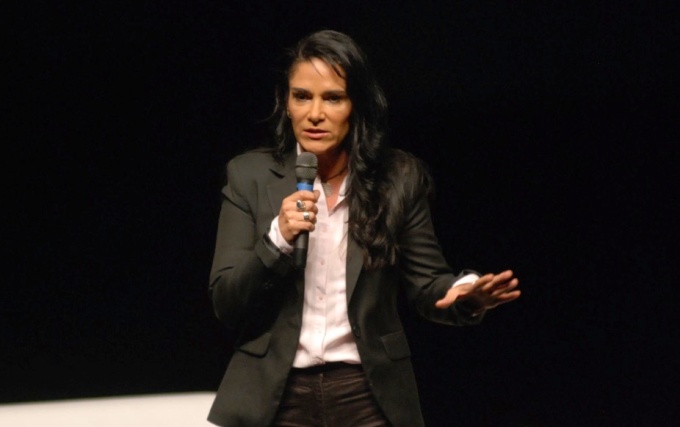
*
From Lydia Cacho’s work, we can see two markets exist for the rape of girl-children – one for Pedo Elites and the other for men in general. Both markets are sponsored by syndicates of organized crime.
For the market for Pedo Elites, where men from society’s highest echelons rape, trade, gift, and/or sell children to men of like-rank, the syndicates provide stealth communications and computer-networking technology, as was used, for example, by Succar Kuri’s wife to send endless pedo-pornography to Las Vegas. Details of the terms between the Pedo Elites and the syndicates beyond these arrangements, however, remain obscured. Pedo Elites may in fact be members of the syndicates, which makes it hard to know if their primary interest is raping children, uber-male class-bonding through the “butchering” of a penniless female child, who, as Succar Kuri said, “has no chance,” or if, as in Cancun’s network, it is always also a business, always a franchise of organized crime. In Cancun’s network, all of the above were in play. But are all Pedo Elite networks like this one? How many Pedo Elite networks are there? Are they concentrated in countries with corrupt justice systems, or are they wherever the uber-brotherhood wants them to be? Are they closed and exclusive? How, exactly, are these networks linked? What, exactly, are their terms with the syndicates? Are the Pedo Elite networks operated independently, or are they run by the syndicates top-down? How is this blood-money divided? Who pays who? Clearly these men are protected and veiled. Their veiling is institutionalized and paid-for, often paid-for by the children themselves, who are handed out like gold coins, offered up for rape to politicians, immigration officials, Interpol agents, hoteliers, reporters, bankers, judges, cops, etc. To lift the veil to try to answer these questions, is, – as Lydia Cacho discovered, – life-threatening. But because men’s behavior is everywhere the same, everywhere predictable, it can be extrapolated from this one uncovered, yet still covered, Pedo Elite network, that the Pedo Elite networks must look alike, that the other networks must look like this one. As Mexico’s Special Prosecutor confirmed, the Pedo Elite networks are inter-linked and exist within the structure of organized crime.
For the market for men in general, the syndicates run girl-trafficking and female-trafficking as intertwined operations around the globe, – from which they make a killing. They also run multiple support-sectors. Support-sectors include the establishment of slave routes, the protection of slave routes, the continual provisioning of “fresh product” for market, and the money-laundering of billions of dollars in annual profits. Support-sectors are themselves major global enterprises. For example, money-laundering billions of dollars year after year is a massive global undertaking with scores of actors and props – suits, mules, pilots, seafarers, storefronts, fake accounts, phantom clients, fraudulent bank documents, furtive electronic transfers, countless collaborators in a vast eclipsed matrix. Money-laundering colossal sums of money is big business. In fact, according to Lydia Cacho, money-laundering is the third-biggest business in the world. [Besides the well-worn offshore options, it is also logical to suspect international businessmen are involved in syndicate money-laundering, as legitimate businesses are needed to rinse the money clean. To surmise, Russian syndicate profits could be laundered as cash loans, – to international businessmen for new and legal business ventures. International businessmen, “global players,” might even compete for these “loans,” especially those with sub-par credit-ratings, bypassing the standard scrutiny of a bank, with their legal and regulatory restrictions and their credit-rating-based interest rates. Interest rates on a Russian laundry loan might be quite low. Syndicates might even pay the laundromat, and pay quite well]. Succar Kuri was initially arrested because Interpol found $20 million of his transactions suspicious. – Just one Pedo Elite ringleader – at least $20 million…
*
Lydia Cacho believes the syndicates which traffic females work together, and are supported by all the governments of the world. Lydia Cacho: “The point of the book was to understand how the international markets are connected. As a reporter, I was really frustrated, because every time I interviewed an expert, everyone kept telling me they’re not linked, that this isn’t an international business. But it is… (It may be) an international mafia also involving Las Vegas… All governments in the world are lying to us about what’s going on with sex-trafficking. The governments are protecting the mafias. We are much more powerful than the mafias… Their greatest power lies in our fear.”
Feminists, Lydia Cacho believes, can end female-trafficking. “I’ve cried a lot,” she said. “But we have to do this work.”
*
Lydia Cacho eventually got so sick, she almost died. Her precarious health and the global recession which had dried up funding for non-profits forced her and shelter staff to permanently close their women’s shelter. – Transforming it instead into a training center for the prevention of violence against women and girls, a place where, among other things, women are now being trained to open and run their own women’s shelters.
Meanwhile, Succar Kuri reportedly had become fearful of the other inmates in Mexico’s highest-security prison.
*
On August 31, 2011, Lydia Cacho got an urgent call from her lawyer: ‘You have to go to the Federal Courthouse in Cancun,’ he said, – ‘right now.‘ The Appeals Judge deciding whether to free Succar Kuri on appeal or not had asked to see her.
Lydia Cacho:
“I identified myself at the entrance to the building, and several minutes went by before the Judge’s assistant arrived to show me in. I walked into his office, he greeted me with scrupulous formality, and I took a seat across from him at his desk… I scarcely breathed as I listened to what he had to say. [It will later be learned that this Judge, while deliberating this case, was both offered cash and threatened].
‘I can tell you now,’ Judge Mata Oliva said, ‘because Succar Kuri and his lawyers heard the sentence a few hours ago and they know all about it.’
‘Tell me your honor,’ I asked in a barely audible voice, fearing the worst – an exoneration.
‘I should tell you that I have reviewed each and every piece of evidence carefully. You are familiar with the evidence, are you not?’
I nodded silently.
‘Not once in my career as a Judge have I ever seen anything as horrifying as the videos Succar Kuri and his wife made of themselves preparing those girls, less than 8-years-old, to be raped. It’s inhuman.’
‘Yes, I know,’ I said.
‘The sentence, which the victims as well as the perpetrator will have formal access to as of now, is 112 years in prison. (Succar Kuri will pay) a fine of 527,174 pesos, and will also be required to pay 320,000 pesos in damages per victim, a figure designed to allow to cover the costs of their therapy, future studies, and any health problems resulting from their trauma. In other words, he will be required to pay 2.5 million pesos. I made the decision to sentence him for each individual case because the law allows me to do so, and because of the seriousness of the crimes… I wanted these girls…to understand that this Court recognizes their bravery and that these crimes have been substantiated beyond all doubt.’”
Never before had a sentence like this been handed down in Latin America. – Not before feminist Lydia Cacho.
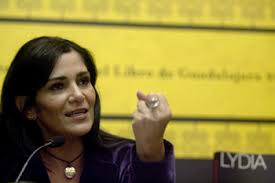

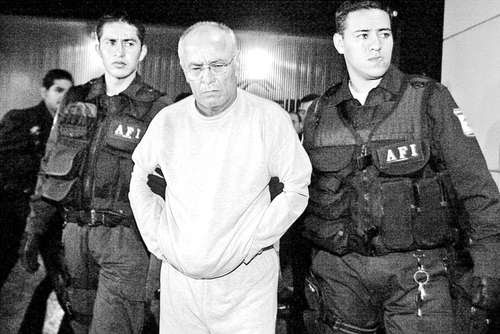
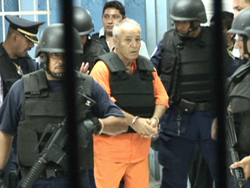
*
Because of one feminist’s extraordinary courage, the following changes have occurred in Mexico: Beating a woman is now against the law. Child rape and child porn have been re-framed in a feminist context, and it is now better understood that these are crimes men commit. Being a rape victim has also been re-framed in a feminist context, and it is now better understood that rape victims have a right to privacy, should not be publicly identified, and also not blamed. Child rape is now a much more serious crime. Making child pornography is now a much more serious crime. (This was to be called ‘The Lydia Cacho Law,’ but she declined). Sharing child pornography is now against the law. Trafficking women and girls is now a much more serious crime. Bringing criminal defamation charges against a journalist is now against the law. Mothers and teachers are now educating themselves on how to identify pedophiles and recognize signs of sexual abuse in children. Young women and girls are now educating themselves on how to identify traffickers and recognize the entrapment tactics traffickers use. And the international Uberpatriarchs who think they can live lavishly off their industrialized rape now know feminists can track them down. – And make them die in prison.
*
In a red-blood rage, Succar Kuri had sworn to Lydia Cacho in the middle of a maximum-security prison that he would kill her – if it was the last thing he did. Shortly after Succar Kuri was sentenced to 112 years in prison, an agent with US Immigration Enforcement contacted Lydia Cacho to tell her Succar’ Kuri’s wife and five sons were back in Cancun and living at the Solymar Villa.
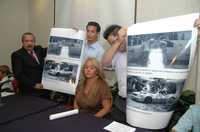
Succar Kuri’s wife, the US immigration agent warned, was looking for a hitman among corrupt police in Cancun ‘for a little job.’ One week later, Lydia Cacho was forced to leave her home, escorted by the organized crime unit of the federal police because a contract killer was shown to be within a two meter distance of her home, – striking distance.
The death threats have not stopped. The death threats, in fact, have only become more harrowing. In one recent incident, Lydia Cacho’s no-access satellite phone turned on by itself, while a man, through a voice scrambler, said: ‘We’ve already warned you, bitch, don’t mess with us. What’s coming next is you’ll be in pieces. That’s how we’ll send you home.’
*
“My life is in danger today,” Lydia Cacho explains. She tapes all phone calls. She videotapes her sur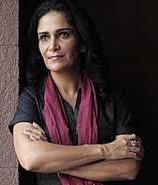 roundings at all times. She keeps a packed bag and her passport ready. Arrangements are in place for the care of her Rottweilers. Lydia Cacho: “I take the death threats seriously. I intend to stay alive; yet if that were not the case, if the mafias end up killing me…it is important to document the entire story of the powers that protect traffickers…”
roundings at all times. She keeps a packed bag and her passport ready. Arrangements are in place for the care of her Rottweilers. Lydia Cacho: “I take the death threats seriously. I intend to stay alive; yet if that were not the case, if the mafias end up killing me…it is important to document the entire story of the powers that protect traffickers…”
“This is not martyrdom,” Lydia Cacho wants it to be known. “This is a fight for dignity.”
“I hope that I can continue to dodge any and all bullets meant for me, but should that prove not to be the case, at least I know with certainty that I am proud of my life…”
*
Each morning, when she rises, Lydia Cacho says: For myself, for my mother, for all women.
*
Many many men want Lydia Cacho dead. – But Lydia Cacho is alive today. – LYDIA CACHO IS ALIVE!
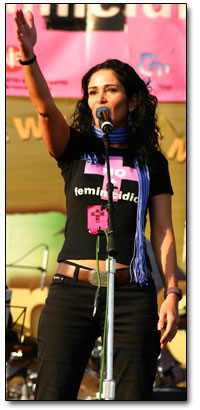
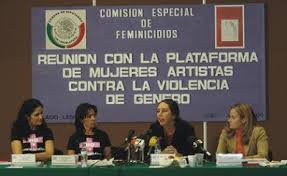
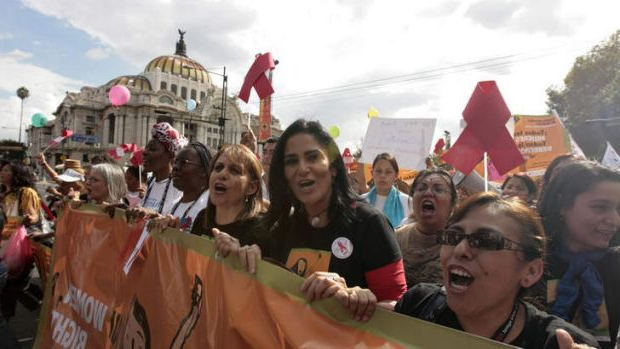
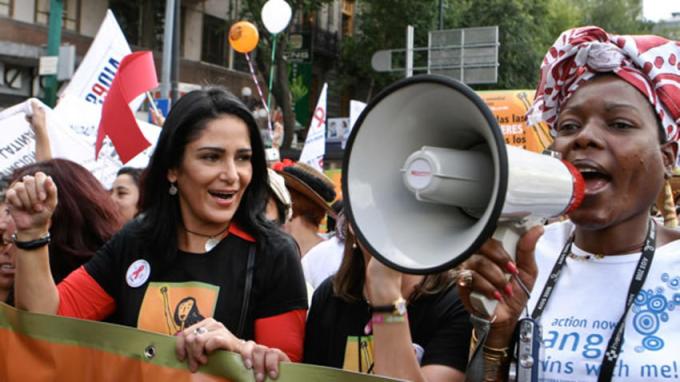
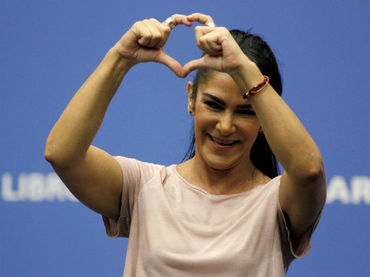
Additional Info:
-
Segments of undercover recording of Succar Kuri by “Emma:” https://www.youtube.com/watch?v=z2AO47dUo1M&feature=youtu.be
-
“Arrest” of Lydia Cacho, as taped by shelter cameras: https://youtu.be/tBX_-1iCESY
-
The Demons of Eden in Spanish: LOS-DEMONIOS-DEL-EDEN-DE-LYDIA-CACHO-.pdf – Google Drive
- Lydia Cacho’s Website in English translation: https://translate.google.com/translate?hl=en&sl=es&u=http://www.lydiacacho.com/&prev=search
-
Lydia Cacho on Twitter in English translation: https://translate.google.com/translate?hl=en&sl=es&u=https://twitter.com/lydiacachosi%3Flang%3Den&prev=search
-
Interview with Lydia Cacho in English https://youtu.be/DocFqoShWlM
References Include:
Books:
- Cacho, Lydia. Infamy: How One Woman Brought an International Sex Trafficking Ring to Justice. Translated into English by Cecilia Ross. Soft Skull Press. 2016.
- Cacho, Lydia. Slavery Inc.: The Untold Story of International Sex Trafficking. Translated into English by Elizabeth Boburg. Soft Skull Press. 2014.
Theses:
- Pearsall, Jill. Corruption, Pedophilia, and Accountability in Mexico: The Case of Lydia Cacho Ribeiro. Ohio State University. May 2008.
- Jones, Gareth and Thomas de Benitez, Sarah. Lost Opportunity: The Lydia Cacho Case and Child Rights in Mexico. The London School of Economics and Political Science. 2014.
Radio:
- Mexico’s Lydia Cacho on Bravery and Journalism. Latino USA. NPR. 2017.
Documentaries:
- Los Demonios del Edén: La Cruzada de Lydia Cacho
- Lydia Cacho : #ImpunidadMata || EP
- Juarez: The City Where Women are Disposable
Articles:
- McGeough, Paul. The Defiant One. The Sydney Morning Herald. August 23, 2014.
- Walker, S. Lynn. Mexican Writer’s Book on Pedophiles Exposes Abuses, and Puts Her in Peril. Copley News/Banderas News. April 2006.
- Mexican Journalist Lydia Cacho: “I don’t scare easily.” The Guardian. April 31, 2012.
- de Valencia, Norrie. Refugees, Human Rights Defenders and the Incredible Story of Lydia Cacho. UNESCO 2008 Freedom of Speech Award Speech. Mozambique. May 3, 2008.
- Imison, Paul. Independent. The New Suffragettes: Lydia Cacho: Justice for Women Means the Right to Live in Safety. May 30, 2013.
- Dangerous Women Project: Lydia Cacho.
- Murphy, Zoeann, Global Threats to Free Press, What Dangers Have You Faced While Reporting in Your Country, Lydia Cacho. The Washington Post.
- Martinez, Chivis. Lydia Cacho: Most Killings of Journalists are Ordered by Government, Military, Political Parties. Borderland Beat. March 24, 2013.
- International Women’s Media Foundation, 2007 Courage in Journalism Award.
- Méndez, Alfredo and Petric, Blanche. Lydia Cacho: “Edith ya sufrió demasiado; no daré yo la última estocada.” La Jornada.
- Mendez, Alfredo, Herrera, Claudia. Familiares de Succar Kuri anuncian que demandarán a Cacho Ribeiro. La Jornada.
- Barajas, Michael. Mexican Journalist Who Braved Death Threats and Torture Will Speak at OLLU for Domestic Violence Awareness Month. San Antonio. October 4, 2016.
- Cacho, Lydia. Challenging the Merchants of Human Slavery. 50.50 Inclusive Democracy. November 30, 2012.
- Campbell, Monica. Battling the Demons of Eden. Amnesty International Magazine. September 9, 2008.
- Scott, Cameron. Mexico’s Most Wanted Journalist. Mother Jones. May 1, 2007.
- Watts Kennedy, Victoria. Interview with Lydia Cacho. 2014.
- Páez Martes, Samantha. Ventila Lydia Cacho ante ONU impunidad en SCJN y Puebla. In e-consulta. October 14, 2014.
- Lydia Cacho Ribeiro, journalist threatened. AmnestyUSA.org.
- Allan, Nicole. Lydia Cacho Ribeiro. The Atlantic. November 2011.
- Roig-Franzia, Manuel. Horror Story. The Washington Post. September 1, 2007.
- “Supreme Court Judges were bribed,” says Cacho. Mexico Reporter. February 8, 2008.
- Cevallos, Diego. Mexico: Ties Between Elites and Child Sex Rings “Beyond Imagination.” InterPress Service. September 13, 2006.
- Cevallos, Diego. Mexico: Key Evidence Blocked in Child Sex Ring Trial. InterPress Service. September 5, 2007.
Speeches:
- Lydia Cacho, Wallenberg Lecture. 2009.
- Lydia Cacho, Global Forum on Freedom of Expression. 2009.
Interviews and clips:
- Frontline Club. Insight with Lydia Cacho: Slavery, Inc.
- Slavery, Inc: Lydia Cacho in conversation with Damien Carrick (Melbourne Writers Festival 2014).
- Hrant Dink Award to Lydia Cacho, Vimeo.
- Lydia Cacho, Mexican journalist risks life to take on sex traffickers, Vimeo.
- Lydia Cacho Goes Undercover in the Global Sex Trade, Fora TV.
- Interview with Lydia Cacho on sex trafficking, prostitution, feminism.
- SEMBLANZA LYDIA CACHO.
- Lydia Cacho on Slave Trade Enablers.
- Lydia Cacho on the dangers for journalists in Mexico.
- CNN Heroes: Lydia Cacho Ribeiro.
- Lydia Cacho: Slavery is Big Business, Festival of Dangerous Ideas. 2014.
- why women count | Lydia Cacho | Mexico.
- How the Sex Trafficking Industry Is Evolving – Lydia Cacho, complete video
- Lydia Cacho.
- Mexican journalist and human rights activist Lydia Cacho Ribeiro chooses “not to fear the monsters.”
- Shame to Mexico: Mexican Supreme Court Rules Against Lydia Cacho.
- Entrevista a Succar Kury respecto a la pederastía.
- Female Freedom of Expression in Mexico (Lydia Cacho Ribeiro).
Other: UN Report on the World Conference on the International Women’s Year, Mexico City, 1975. Published 1976. http://www.un.org/womenwatch/daw/beijing/otherconferences/Mexico/Mexico%20conference%20report%20optimized.pdf





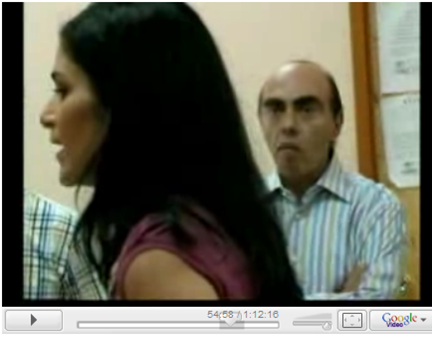

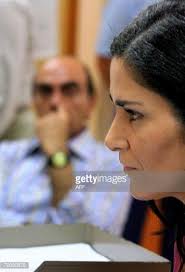
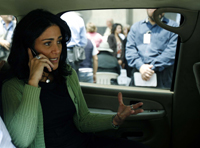
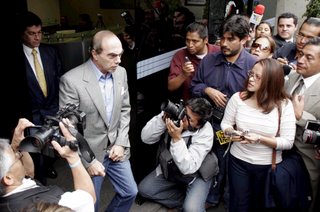


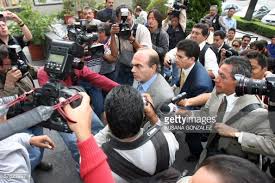
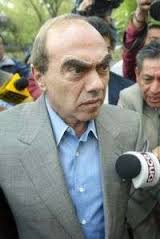
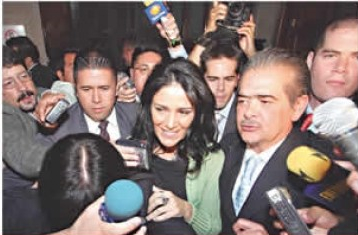


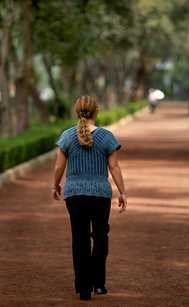 Emma, now 24, wrote Lydia Cacho to say Kamel Nacif’s attorneys had her sign an agreement in English which she didn’t understand, in exchange for money. Yet Emma did show up to personally testify against Lydia Cacho, no doubt under duress, clearly still Stockholmed, – though she told the media she now felt all parties involved had betrayed her. Kamel Nacif’s and Emma’s civil suit alleged Lydia Cacho had exposed their “private affairs, and therefore, Lydia Cacho and her publishers owed them millions of pesos for making their “private information” public in her book. The suit also alleged Lydia Cacho was not a journalist because she did not hold a professional credential. “A group of the country’s most renowned journalists had to testify before the Court,” Lydia Cacho remarked of the absurdity, “that I am indeed a journalist.” In the suit, Kamel Nacif offered Lydia Cacho and her publishers the option of paying damages or letting him rewrite her book.
Emma, now 24, wrote Lydia Cacho to say Kamel Nacif’s attorneys had her sign an agreement in English which she didn’t understand, in exchange for money. Yet Emma did show up to personally testify against Lydia Cacho, no doubt under duress, clearly still Stockholmed, – though she told the media she now felt all parties involved had betrayed her. Kamel Nacif’s and Emma’s civil suit alleged Lydia Cacho had exposed their “private affairs, and therefore, Lydia Cacho and her publishers owed them millions of pesos for making their “private information” public in her book. The suit also alleged Lydia Cacho was not a journalist because she did not hold a professional credential. “A group of the country’s most renowned journalists had to testify before the Court,” Lydia Cacho remarked of the absurdity, “that I am indeed a journalist.” In the suit, Kamel Nacif offered Lydia Cacho and her publishers the option of paying damages or letting him rewrite her book. *
* Governor Marin’s lawyers brazenly told the press the Justices had heeded their warning to protect the Governor. Lydia Cacho was devastated. It was unclear what this rift between the Justices meant for her case, – except it would now be stalled.
Governor Marin’s lawyers brazenly told the press the Justices had heeded their warning to protect the Governor. Lydia Cacho was devastated. It was unclear what this rift between the Justices meant for her case, – except it would now be stalled.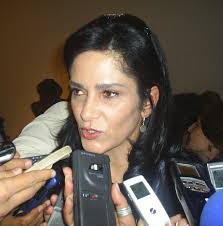
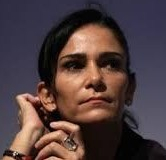
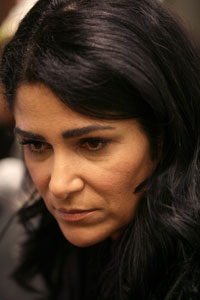

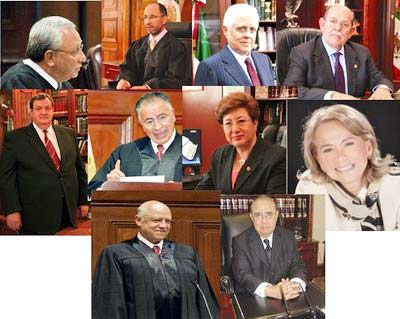
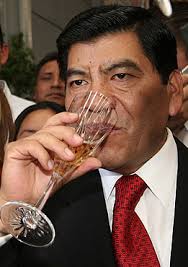
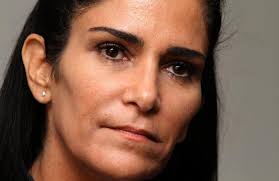
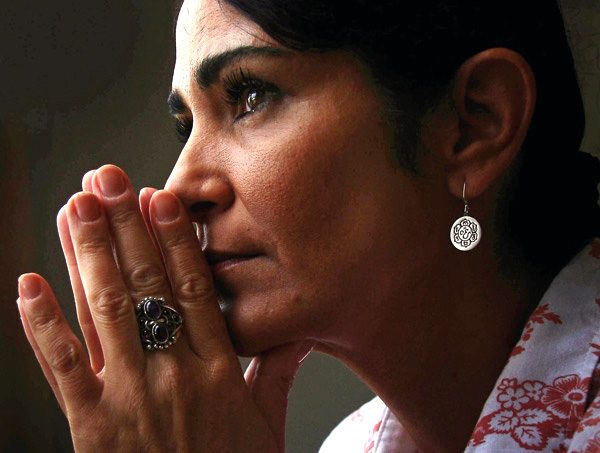

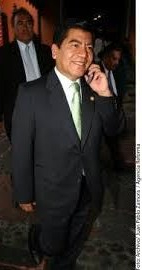
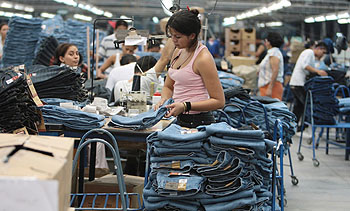
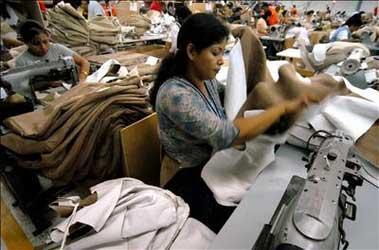

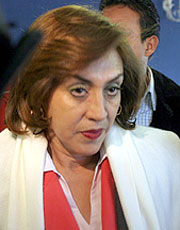
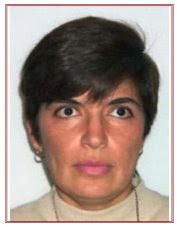

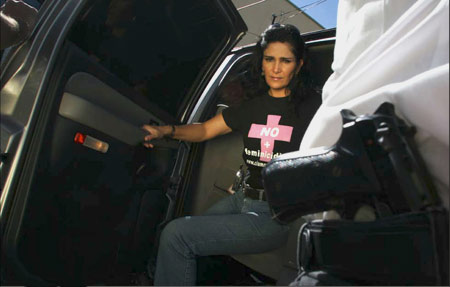
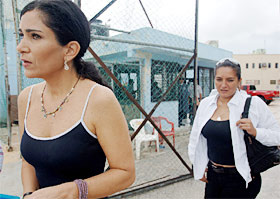
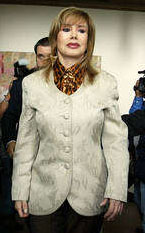
 went through the roof. And then another unbelievable thing happened: 40,000 people took to the streets, bravely calling for Puebla Governor Marin’s impeachment. Other protests followed, in support of Lydia Cacho. A democracy protest of this scale had not taken place in the State of Puebla in over a century.
went through the roof. And then another unbelievable thing happened: 40,000 people took to the streets, bravely calling for Puebla Governor Marin’s impeachment. Other protests followed, in support of Lydia Cacho. A democracy protest of this scale had not taken place in the State of Puebla in over a century.